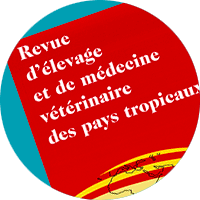Taenia solium cysticercosis survey at a slaughterhouse in Kampala, Uganda
Abstract
A survey was conducted at Wambizi slaughterhouse in Kampala City, Uganda, to ascertain the prevalence of Taenia species infection in pigs via serology, as well as the role of meat inspection in control of these parasitic conditions in carcasses of slaughtered pigs. A total of 620 pigs were sampled using simple random selection during three months. Individual pig data including sex, breed, district of origin, antemortem clinical signs and postmortem lesions were recorded. Blood samples were collected for serological assays. A questionnaire was used to capture perceptions of meat inspectors and pig traders on T. solium cysticercosis. Of the 620 pig inspected carcasses, only four were observed with T. solium cysts and none had T. hydatigena cysts. Up to 67 (10.8%) pigs tested positive by B158C11A10/B60H8A4 Ag-ELISA serology. Seroprevalences were significantly different between districts (χ2 = 45.98; p < 0.001) with pigs from the Eastern districts having the highest seroprevalence. The two meat inspectors at the slaughterhouse had knowledge of pork inspection protocol for Taenia spp. infections, although they did not follow it properly because of the high number of carcasses to be inspected daily. All the 15 traders interviewed had heard about porcine cysticercosis but only five had ever seen cystic pork. T. solium cysticercosis is still prevailing in pigs in Uganda. Meat inspection is not a reliable diagnostic tool for efficient detection of T. solium cysticercosis.

